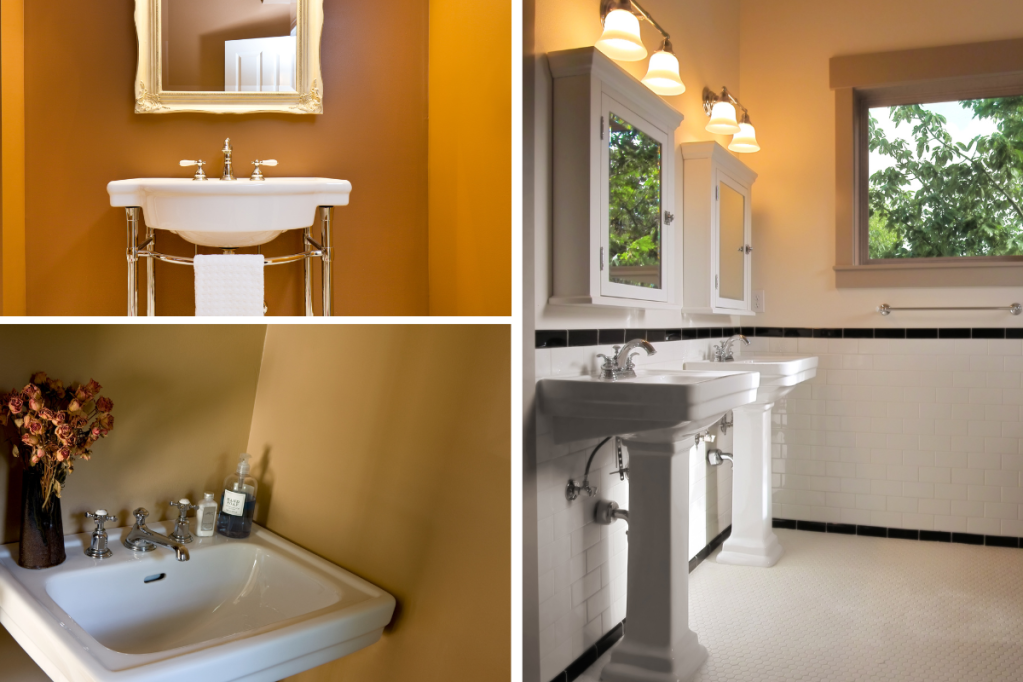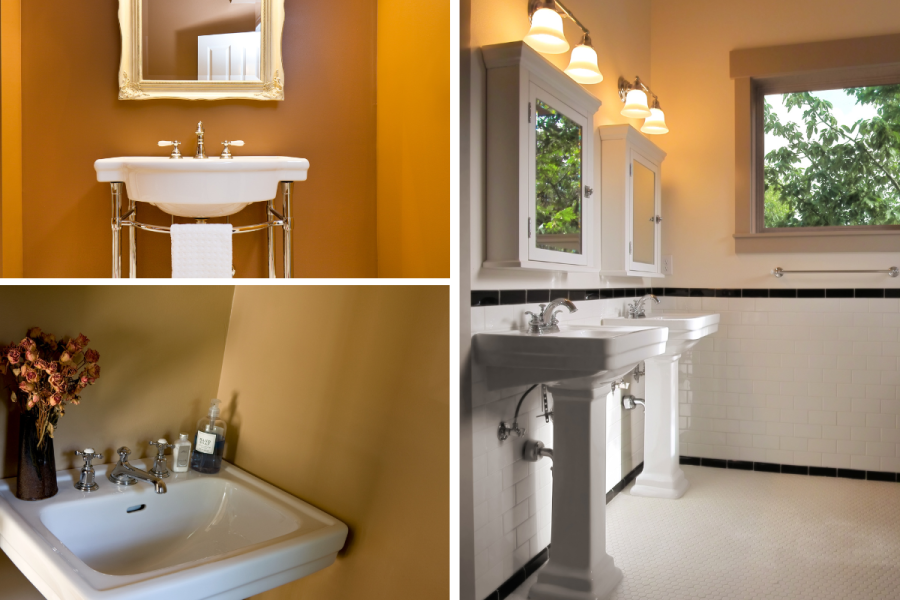
Choose the pedestal sink that is the perfect fit for your Singaporean bathroom in terms of its dimensions, its shape, and the material it is made of. Use our in-depth guide in order to make the right decision.
Evaluating the Ideal Size and Shape for Your Space
Size and shape are key when choosing a pedestal sink for your bathroom. A pedestal sink in Singapore is a good choice for a small bathroom because it takes up little space. To ensure it fits in your bathroom and complements the design, choose the right size and shape.
Measure your bathroom to determine space before choosing a sink. Consider the sink’s placement in relation to other fixtures and make sure it doesn’t block foot traffic. Your bathroom style should determine shape. A traditional or vintage bathroom may suit a rounded or oval sink, while a modern or contemporary bathroom may prefer a square or rectangular sink.
It’s important to consider a pedestal sink’s practicality when choosing its size and shape. Larger sinks are more comfortable, but they can take up more space and may not fit in smaller bathrooms. For a guest bathroom or powder room, a smaller sink may be more practical. Make sure everyone can use the sink’s height.
Selecting the Best Material for Durability and Style
When choosing a pedestal sink in Singapore, material is crucial. Each material used to make pedestal sinks has pros and cons. Porcelain and ceramic are durable, easy to clean, and available in many colors and styles. Glass is another modern bathroom material.
Stainless steel and natural stone are also popular pedestal sink materials. Stainless steel is a practical bathroom material because it resists scratches and stains. Marble or granite can elevate a bathroom with their luxury. It’s important to note that natural stone can be more expensive and require more maintenance than other materials.
The bathroom’s style should be considered when choosing a pedestal sink in Singapore material. A porcelain or ceramic sink may work better in a traditional bathroom, while a glass or stainless steel sink may work better in a modern bathroom. Make sure the material can withstand regular use and cleaning without showing signs of wear and tear.
It’s important to consider size, shape, and material when choosing a pedestal sink for your bathroom. Consider your bathroom’s size, design, and sink functionality. Choose a stylish and durable material from the available options. By carefully considering these factors, you can choose a pedestal sink that will improve your bathroom’s functionality and design.
Considerations for Faucet, Drain and Overflow Configurations
Faucet, drain, and overflow configurations should be considered when choosing a pedestal sink. From traditional to modern, faucets can change the look and feel of your bathroom. Make sure the faucet’s height and reach fit the sink and space.
Also important are drain and overflow configurations. Center-set drains make pedestal sinks easier to clean and maintain. However, some sinks have an offset drain, which may be better for certain plumbing setups. Water damage and bathroom flooding can be prevented by the overflow. Make sure the overflow fits the sink’s style and is convenient.
The sink’s practicality should be considered when assessing the faucet, drain, and overflow configurations. Choose a faucet that is stylish and functional for the space, and make sure the drain and overflow configurations match your plumbing needs. By carefully considering these factors, you can choose a pedestal sink that meets your design and practical needs.
Understanding the Practicality of Pedestal Sinks for Small Spaces
Pedestal sinks are popular in small bathrooms because they take up little space. To make sure pedestal sinks for small spaces are right for your bathroom, it’s important to understand their practicality.
A pedestal sink in a small bathroom can open up the space. Pedestal sinks make bathrooms feel larger by eliminating the bulk of a vanity or cabinet. A pedestal sink can also be cheaper than a vanity for a small bathroom.
In a small bathroom that needs storage, a pedestal sink may not be the best choice. Without a vanity or cabinet, you may need a shelf or medicine cabinet for storage. For some users, a pedestal sink may not provide enough counter space for daily use.
The plumbing needs of a pedestal sink in a small space must be considered. A pedestal sink requires a wall-mounted faucet and drain, which may require extra plumbing and installation. A pedestal sink may not work for all plumbing configurations, so consult a plumber to make sure it’s right for your bathroom.
Consider the faucet, drain, and overflow configurations and the sink’s suitability for your space when choosing a pedestal sink. Select a faucet and overflow that match your design and plumbing needs, and make sure the drain is easy to clean. Consider the pros and cons of a pedestal sink in small spaces, including storage, counter space, and plumbing. By carefully considering these factors, you can choose a pedestal sink that meets your design and practical needs.
Selecting the Best Material for Durability and Style
Different materials offer different benefits for pedestal sinks. When choosing a pedestal sink material, consider durability and style.
Due to its durability, ease of cleaning, and variety of colors and patterns, porcelain pedestal sinks are popular. Porcelain is scratch-, stain-, and heat-resistant, making it a good bathroom sink material. Marble, granite, and soapstone are also popular pedestal sink materials because they are durable and add natural beauty to the bathroom.
The bathroom’s style should also be considered when choosing a pedestal sink material. A pedestal sink made of stainless steel or glass may be better for a contemporary bathroom design than one made of cast iron or ceramic.
The best pedestal sink material depends on your style and practical needs. You can choose a material that meets your design and functional needs by carefully considering these factors.
Troubleshooting Tips for Common Installation Challenges
Installing pedestal sinks can be tricky, but they’re stylish and functional. To help you install your pedestal sink, here are some common issues and solutions.
Correctly aligning the sink and pedestal is a common issue. Using shims or adjusting the mounting bracket height can level and secure the sink and pedestal. The sink and pedestal should also be securely anchored to the wall to prevent movement.
Another issue is fitting the drain and faucet. To ensure proper drainage, the drain must be aligned and securely attached to the sink. To avoid leaks, make sure the faucet is properly installed and sealed.
Make sure your pedestal sink’s plumbing is set up properly. Adjusting the water supply lines, drain, and connections may be necessary.
It’s important to consider durability, style, and common installation issues when installing a pedestal sink. You can install a pedestal sink that meets your design and practical needs by carefully considering these factors and following installation best practices.
